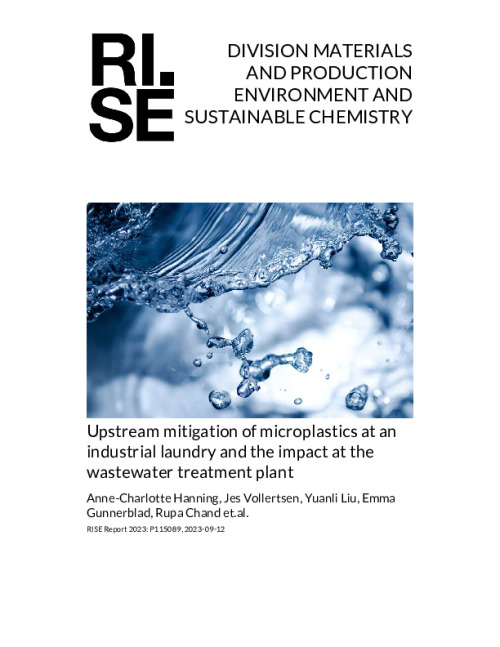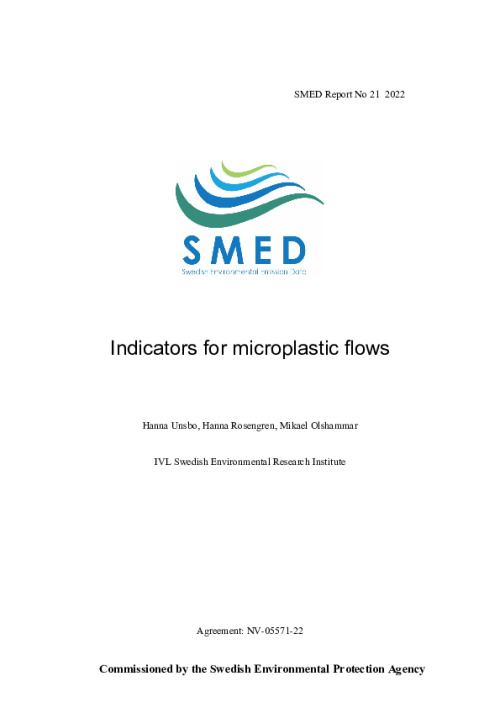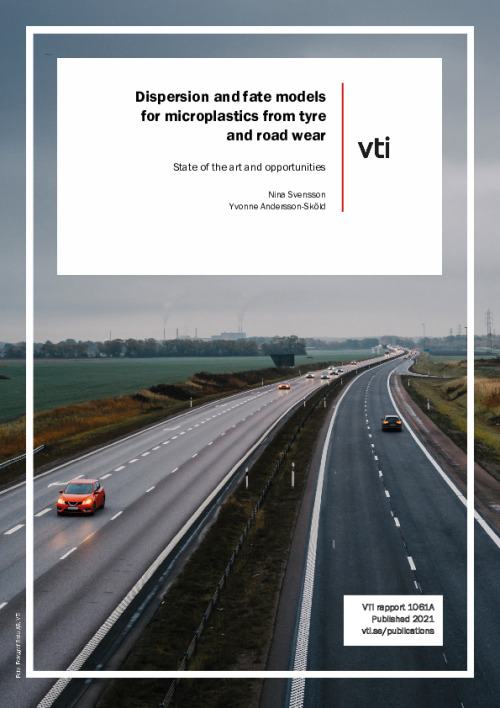Microplastics from tyre and road wear - A literature review
This literature review concerns microplastics from tyre and road wear caused by road traffic. As there is limited knowledge about microplastics in general, and microplastics from road traffic in particular, the Swedish Government commissioned the Swedish National Road and Transport Research Institute (VTI) to, during 2018-2020, develop and disseminate knowledge about microplastics from road traffic. The chapters in this report summarises existing knowledge about microplastics from road traffic with respect to the following aspects: sources, spread and presence; effects on and risk to the environment and human health; characteristics and chemical composition; tyre and road wear; sampling methods; analysis and sample preparation; and measures. The report also includes a chapter with overall conclusions, and a chapter about further research, development and investigation needs.
The purpose of this report is to provide a basis for reducing the generation and spread of microplastics from road traffic. One aim of the report is to collate and disseminate knowledge about microplastics generated by tyre and road wear, and to review the current level of knowledge. A second aim is to identify knowledge gaps and research requirements in relation to microplastics from road traffic. This literature review is based on a review of scientific articles and reports, as well as technical literature and some information from experts and industry.
This literature review concerns microplastics generated by road traffic. Particles are produced as a result of tyre and road surface wear. The vast majority of all microplastic particles from road traffic are tyre wear particles; however, particles are also generated as a result of the wear of road markings (e.g. road paint) and of the road surfacing, which may contain polymer modified bitumen. Based on present knowledge and mapping of microplastic sources in Sweden, it can be assumed that at least half of the Swedish microplastic emissions are tyre wear particles. Other traffic related sources of microplastics which are not related to tyre and road wear, such as crashed vehicles, littering and, wear from certain brake pads, are not included in this report. The report is also published in Swedish (VTI rapport 1028).
As there is limited knowledge about microplastics from road traffic, and tyre wear is assessed as the largest source of microplastic emissions in Sweden, the Swedish Government commissioned the Swedish National Road and Transport Research Institute (VTI) to (during 2018-2020) develop and disseminate knowledge about microplastics from road traffic. The assignment is part of the Government´s work to implement national and international efforts to reduce the problems of plastic in the environment.
Scientific studies have shown that microplastics in general are widespread in the environment. Microplastics have been found in water and sediments from oceans, lakes, and watercourses. They have also been found in sludge from wastewater treatment plants, in stormwater, in soil and vegetation, in indoor and outdoor air, in food and drink, and in many different organisms, including humans. The presence of tyre wear particles has been demonstrated in road dust, air, watercourses, stormwater and different sediments, including on the west coast of Sweden, however, as the number of studies is very small it is not possible to know what represents normal, high, or low levels in different media. There are no studies on the presence of these particles in sewage sludge, terrestrial environments (except in traffic environment), or in organisms in nature.
There is currently insufficient knowledge to evaluate the effects on the environment and human health caused by the exposure to current levels of microplastics in the environment. Despite this, the fact that emissions from tyre and road wear are very high and increasing; that the particles are likely to be persistent in the environment; and that the particles themselves, as well as hazardous substances in particles, or sorbed on the surface of the particles, may cause negative effects on organisms, are deemed sufficient to motivate measures to be taken.
The aim of this report is to provide a basis for reducing the generation and spread of microplastics from road traffic. One aim of the report is to collate and disseminate knowledge about microplastics from tyre and road wear, and to review the current state of knowledge. Another aim is to identify knowledge gaps and research requirements in relation to microplastics from road traffic.
Each chapter in this report summarises existing knowledge about microplastics from tyre and road wear with respect to one or more aspects. Aspects include sources, dispersal and presence; effects on and risk to the environment and human health; characteristics and chemical composition; tyre and road wear; sampling methods; analysis and sample preparation; and measures. The report also includes a chapter with overall conclusions, and finally a chapter about further research and development needs.
Only a small number of the existing studies of microplastics relate to microplastics from road traffic, and the ones that do, almost exclusively consider tyre wear particles. Studies about particles from the wear of road markings and polymer modified bitumen are almost non-existent. The least is known about the very smallest particles, i.e. the nano-sized ones.
This knowledge review shows that there is currently almost no, or very limited, knowledge on microplastic generated by tyre and road wear. Consequently, there is an extensive lack of knowledge regarding the amounts of microplastic particles emitted from tyre, road and road marking wear; the sizes of the generated particles; how they spread and potentially change in the environment; at what levels they are present in different environments; the levels of exposure to humans and the environment; and to what extent the exposure is hazardous to the environment and human health.
There are currently no standards for the collection, preparation, or analysis of microplastic samples. This makes it difficult, and sometimes impossible, to compare different findings. This is a major problem, as the number of available studies is comparatively small, and studies are both time consuming and expensive to carry out. Having standards in place for the above-mentioned areas would enable us to faster, and at a lower cost, generate the knowledge we need to assess the risks to humans and the environment posed by microplastic particles from road traffic.
There are also considerable gaps in our knowledge about different ways to reduce the generation of microplastics from road traffic, and their effectiveness. When combined with the knowledge gaps described above, this means that we do not possess the knowledge needed to, on objective grounds, make well-informed prioritisations between different policy instruments and measures, or to assess the cost-effectiveness of different measures.





